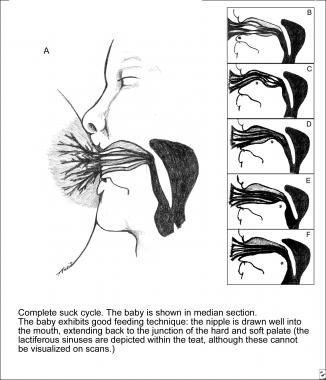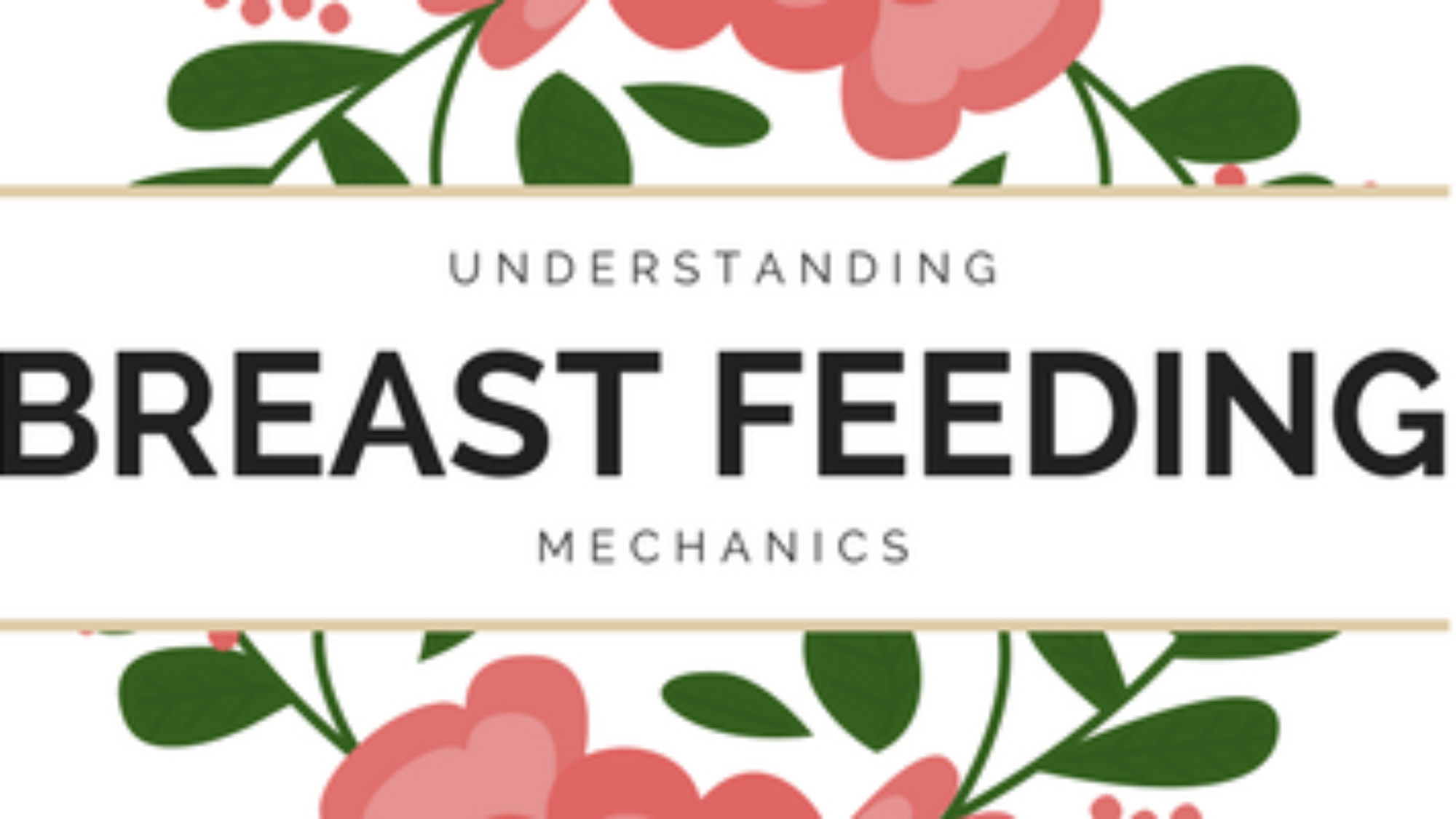Understanding the actual mechanism of how babies get milk into their bodies is important. Suckling and breastfeeding are often areas that are taken for granted because of their seemingly instinctive nature. However, the mechanics should not be forgotten or deemphasized because they are essential for a successful and uncomplicated breastfeeding experience. This understanding is helpful in ensuring the use of proper breastfeeding technique.
Initiation of the breastfeeding cycle
When breastfeeding begins, the nipple, surrounding areola, and underlying breast tissue are brought deeply into the infant’s mouth, with the baby’s lips and cheeks forming a seal (see the image below).

When breastfeeding begins, the nipple, surrounding areola, and underlying breast tissue are brought deeply into the mouth of the infant, whose lips and cheeks form a seal.
During feeding, the suction created within the baby’s mouth causes the mother’s nipple and areola mammae to elongate to 2-3 times their resting length and to form a teat. The nipple and areola extend as far as the junction between the baby’s hard and soft palates. The baby’s jaw then moves his or her tongue toward the areola, compressing it. This process causes the milk to travel from the lactiferous sinuses to the infant’s mouth. The baby then raises the anterior portion of the tongue to complete the process.
Afterward, the baby depresses and retracts the posterior portion of his or her tongue in undulating or peristaltic motions. This motion forms a groove in the tongue that channels milk to the back of the oral cavity and stimulates receptors that initiate the swallowing reflex. This backward movement creates a negative pressure, allowing milk to travel into the baby’s mouth. Throughout the suckling cycle, the nipple should not move in the infant’s mouth if it is correctly positioned.
Swallowing during the breastfeeding cycle
When the volume of milk is sufficient to trigger swallowing, the back of the infant’s tongue elevates and presses against the posterior pharyngeal wall. The soft palate then rises, closing off the nasal passageways. The larynx then moves up and forward to close off the trachea, allowing milk to flow into the esophagus. The infant then lowers his or her jaw, the lactiferous sinuses refill, and a new cycle begins. A rhythm is created in which a swallow typically follows every 1-3 sucks.
Differences between suckling and sucking
Distinct differences between suckling from a breast and sucking from an artificial nipple are important to note. Suckling from the breast is an active process that involves participation of both the mother and her infant. In contrast, bottle-feeding is a more passive activity that results in the creation of a partial vacuum in the infant’s mouth through sucking. The artificial teat taken into the infant’s mouth has a distinct oral/tactile stimulation. When an infant sucks on an artificial nipple, the nipple fills his or her mouth and prevents the peristaltic tongue action that occurs with suckling at the breast. Milk flows from the artificial nipple into the mouth without tongue action; flow occurs from the rubber nipple even if the baby’s lips are not sealed around the nipple. Because of these differences, an infant is more likely to have a desaturation episode during bottle-feeding than during breastfeeding.
Phenomenon of human imprinting
Lawrence and Lawrence (2005) discuss the phenomenon of human imprinting or stamping, which occurs early in the postnatal period. [8] Comfort sucking and the formation of a nipple preference are genetically determined behaviors that affect imprinting to the mother’s nipple. The baby’s initial recognition of his or her mother involves the distinctive features of the nipple. If an infant who is learning to breastfeed receives supplementation via a bottle or a pacifier, the nipple-recognition signals are mixed. Although some dispute the existence of nipple confusion, numerous documented cases support its existence. Certainly, studies have shown that supplementation and the introduction of a foreign nipple, such as a pacifier, are associated with decreased rates of continued breastfeeding.



Add a Comment